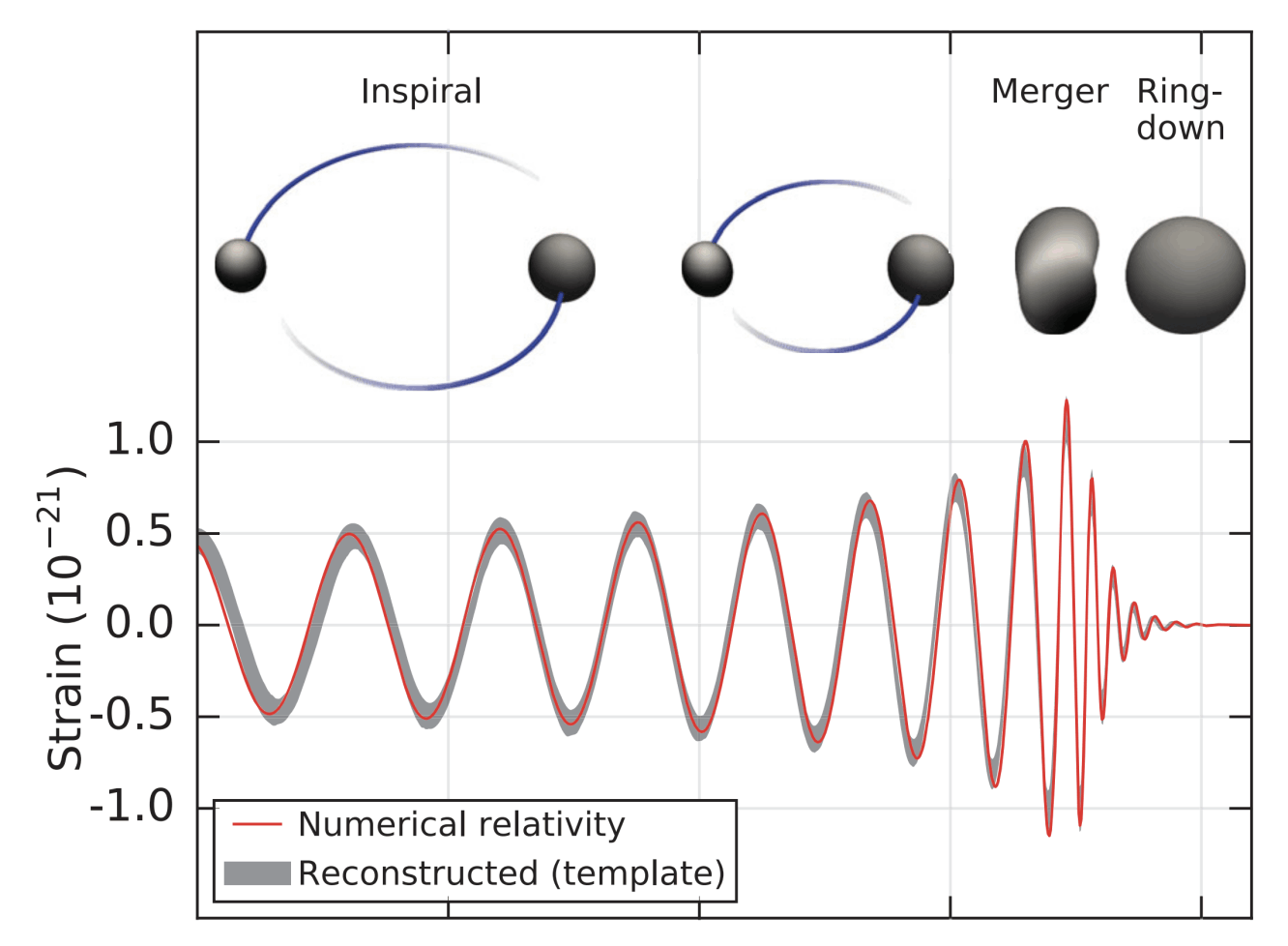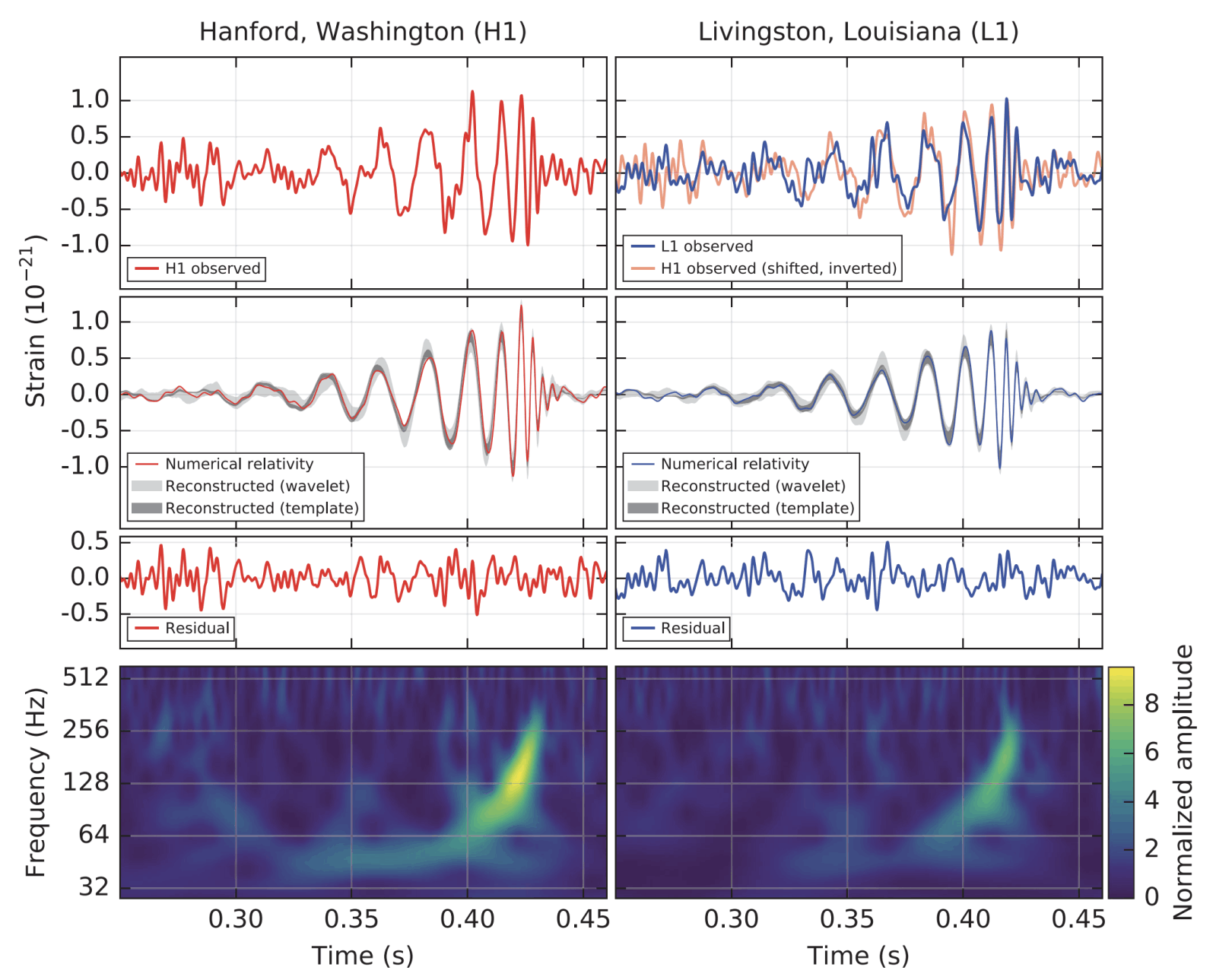Detecting gravity waves is exactly as hard as it sounds. The Laser Interferometer Gravitational-Wave Observatory consists of two separate detectors: one in Hanford, Washington, and the other in Livingston, Louisiana. To ensure that their detected signals are genuine and not a result of environmental disturbances, each detector is fitted with seismometers, accelerometers, microphones, magnetometers, radio receivers, weather sensors, AC-power line monitors, and a cosmic-ray detector.
LIGO's detectors use orthagonal laser beams to detect gravity waves. When a wave passes through the detecors, they will alter the length of the laser being shone inside of the detector arms, which is how they are detected. This graph shows the detected signal unnderneath a graphical representation of what is happening in space:
LIGO's detectors use orthagonal laser beams to detect gravity waves. When a wave passes through the detecors, they will alter the length of the laser being shone inside of the detector arms, which is how they are detected. This graph shows the detected signal unnderneath a graphical representation of what is happening in space:


